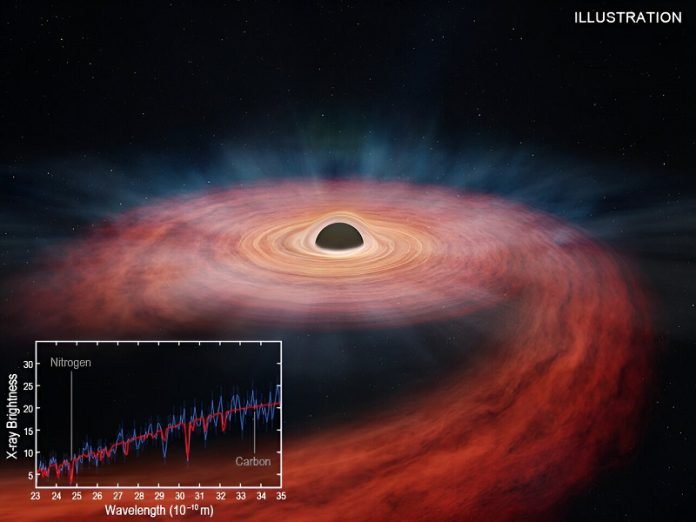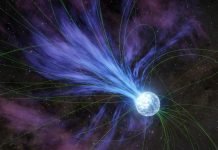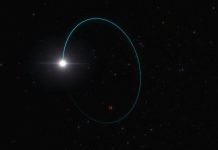
Ever wondered what happens when a star gets too close to a black hole?
Well, it gets torn apart and thrown into space!
This is what scientists have been studying using some amazing space telescopes. They’ve been examining a special event where a star about three times the size of our sun got destroyed by a gigantic black hole.
NASA and the European Space Agency have these powerful telescopes called the Chandra X-ray Observatory and XMM-Newton.
They looked at the space near a black hole that had torn a star apart. This specific event is known as ASASSN-14li, and it’s special because it’s one of the closest such events to Earth that we’ve found in the last ten years.
Being so close, relatively speaking, let scientists see a lot of details.
Jon Miller, the study leader, explained that they’re basically looking at what was once inside the star.
They found elements like nitrogen and carbon near the black hole. These elements give clues about the type of star that was destroyed. Because the star was so massive, scientists are super interested in learning more about it.
Why is it so cool? Well, it’s really hard to measure the mass (or “weight”) of a star that’s been destroyed by a black hole.
This event gave scientists a good way to do that. In this case, they found that the star was about three times the size of our sun, making it one of the biggest stars we’ve seen get destroyed this way.
This isn’t the first time we’ve seen a star get eaten by a black hole. There’s another event called “Scary Barbie” where a star about 14 times the size of the sun might have been destroyed. But that one is still not confirmed, and they didn’t get as many details as they did with ASASSN-14li.
Another cool thing is that we’ve seen stars similar to the one in ASASSN-14li near the supermassive black hole at the center of our own galaxy. That means scientists could use these events to learn more about stars that could be hanging around other giant black holes in faraway galaxies.
Before this study, some people thought the elements like nitrogen and carbon might have come from the black hole itself, perhaps from previous eruptions. But the scientists say that’s not the case here.
They are pretty sure that these elements are from the star that got torn apart.
So, thanks to this space detective work, we now know more about what happens when a big star gets too close to a black hole. It’s like watching a cosmic drama unfold, and it gives scientists lots of clues to understand the mysteries of our universe.
The findings have been published in a scientific journal for everyone to see and learn from.
Follow us on Twitter for more articles about this topic.
Source: NASA.




